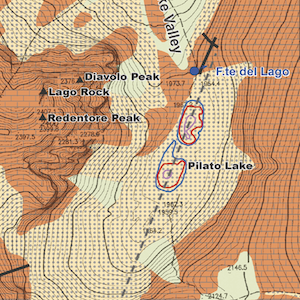New hydrogeological results on the Groundwater Dependent Ecosystem of the Pilato Lake (Sibillini Mts, Central Italy)

All claims expressed in this article are solely those of the authors and do not necessarily represent those of their affiliated organizations, or those of the publisher, the editors and the reviewers. Any product that may be evaluated in this article or claim that may be made by its manufacturer is not guaranteed or endorsed by the publisher.
Accepted: 25 March 2022
Authors
Located at an altitude of about 1950 m a.s.l. in a glacial cirque of Mount Vettore (Monti Sibillini National Park - Central Italy), Pilato Lake is one of the few glacial lakes existing in the Apennines. Due to the endemic presence of the crustaceous Chirocephalus marchesonii, the Pilato Lake was in the past mainly studied from the biological viewpoint, but hydrogeological information on this groundwater dependent ecosystem is scarce. Furthermore, for investigating the lake drying in the recent 2017, 2019 and 2020 summers, the seasonal lowering of lake levels during 2010, 2012 and 2014-2020 was reconstructed. It resulted that in the preseismic years, the lake emptying was slower than in the post-seismic time. It is then supposed that seismic quaking induced an increase in permeability and, consequently, increased infiltration velocity through the lake sustaining surficial (detrital and glacial) and/or bedrock deposits towards the subsurface. More frequent summer dryings of the lake are then supposed for the next future. The hydrogeological conceptual model of the study area showed that the refilling process of the lake is driven by snow and rain precipitations. The air temperatures during 2017-2020 and their effects on evaporation from lake and on actual evapotranspiration were estimated. The infiltration through sustaining sediments was calculated and the estimation with time of lake wet surface and lake volume variations, and then bulk permeability of sustaining sediments, were evaluated as well.
How to Cite

This work is licensed under a Creative Commons Attribution-NonCommercial 4.0 International License.








